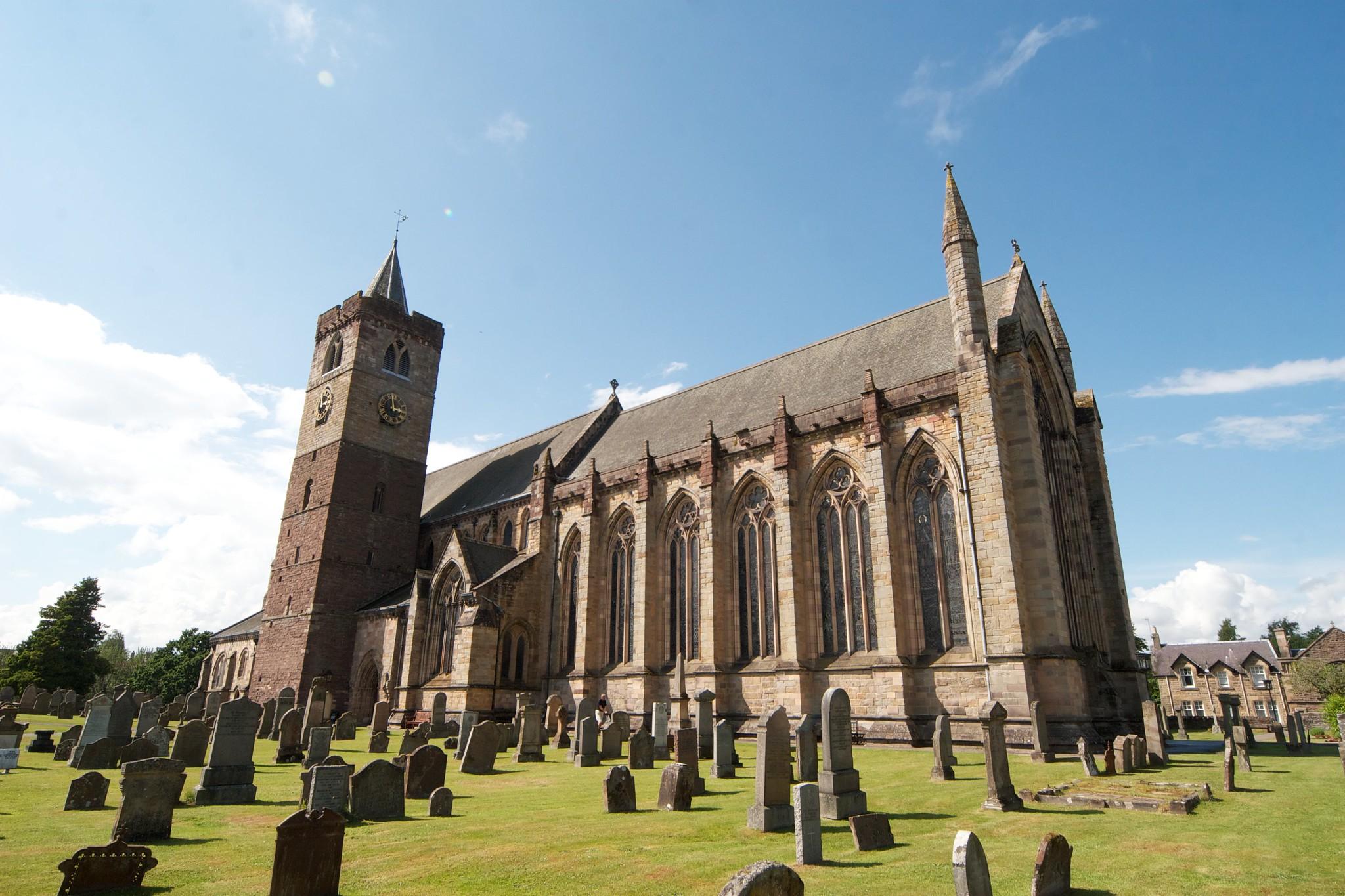Parish Church
Bridge of Allan, Central
A focus in the village, the parish church and halls have Charles Rennie Mackintosh features.

Dunblane Cathedral, built upon a Christian site first established by Saint Blane around the year 600, is one of the few surviving medieval churches in Scotland.
Dunblane, Central
Dunblane Cathedral dates back to the 12th century, most of what stands being constructed during the bishopric of Clement in the 13th century. When Clement, a Dominican Friar, was appointed Bishop in 1233, he probably found standing only the tower (four lower storeys of the present tower) and a church attached to the tower, but incomplete. This church he removed in order to build a larger.
He complained to the Pope that the Cathedral was largely unbuilt, that he had no place to lay his head, and insufficient revenues to support a Bishopric, and that the services were conducted by a rural chaplain only. The Pope in 1237 authorised the Bishops of Glasgow and of Dunkeld to visit Dunblane, and, if they saw fit, to give to the Bishop of Dunblane a fourth of the tithes of the churches of the diocese, so that he might build his Cathedral and organise his diocese; and with these monies Clement, before he died in 1258, was able to build the Lady Chapel and most of the Cathedral largely as it now stands.
For the next 300 years until the Reformation the Cathedral was gradually filled with more and more elaborate furnishings. In 1560 the Church of Scotland became reformed or protestant. The use of the Cathedral was now drastically altered and the congregation needed only the choir for use as the parish church. The roof of the nave fell in towards the end of the 16th century and the nave remained roofless for 300 years, during which the congregation worshipped in the choir. In 1889 a great restoration of the whole Cathedral was begun under the guidance of Sir Rowand Anderson, a leading Scottish architect, when the nave was reroofed and public worship restored in it in 1893. A further restoration of the choir was carried out under another noted Scottish architect, Sir Robert Lorimer, in 1914.
Bridge of Allan, Central
A focus in the village, the parish church and halls have Charles Rennie Mackintosh features.
Stirling, Central
A mid 19th century church fully refurbished in 2025 for church and community use.
Stirling,
Visitors, residents are welcomed as friends to this sacred space, whose very stones bear witness to this special place, part of our spiritual journey, with countless lives caught up in it.